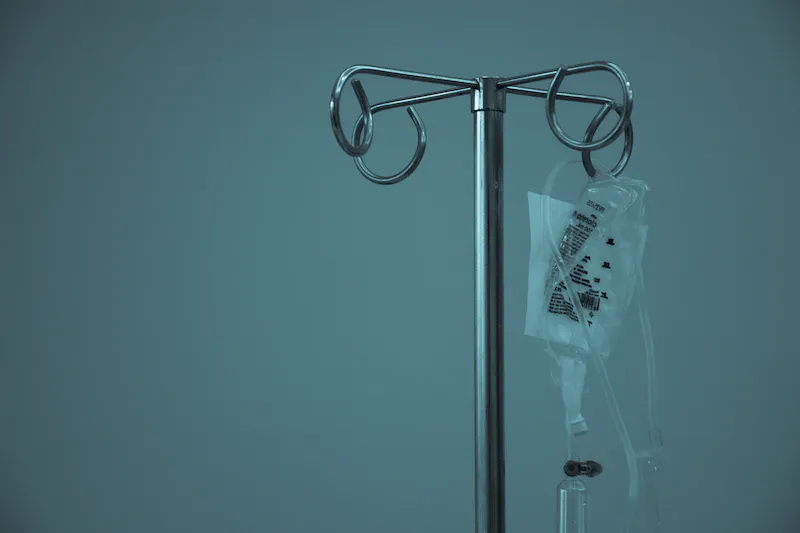The Importance of Comprehensive Sexuality Education in K-12 Grades

The Eight Steps of Sex Education in the United States
Growing up, we were taught that there were certain steps we were supposed to follow when it came to sex and relationships. It was something that we were all expected to know, no matter our background or upbringing.
The eight steps were as follows: meet somebody of the opposite sex, date for a while, fall in love, get engaged, get married, have sex on your honeymoon for the first time, and then make babies.
It was something that seemed to be universally understood, and we were all supposed to follow it. But the truth is, very few people actually did.
As a sexuality educator, I know that these eight steps were just the beginning. They may have led to sex, but there was so much more that we needed to learn and understand.
That’s where comprehensive sexuality education comes in. It’s about teaching people how to build skills to process uncomfortable feelings like shame, guilt, and regret. It’s about understanding that sex is a difficult topic for many of us to talk about, and that’s okay.
We need to have more conversations about what feels good in our lives and how we can support pleasure. And we need to do it according to our own values.
The provision of sexuality education is a subversive act. It challenges the negative media messages and political positioning that have been surrounding this topic for years.
If we want to make a real impact, we need to institute comprehensive sexuality education in K-12 grades, taught by qualified people who can help us better understand the complexities of sex and relationships.
It’s time to move beyond the eight steps and start having real conversations about sexuality and what it means to us.
The Discomfort Surrounding Sex Education and How to Handle It
Let’s face it: sex education is uncomfortable. It’s a difficult topic for many of us to talk about, and that’s because of the way we’ve been raised or the things that have happened to us that weren’t consensual.
As someone who has been a sexuality educator for 30 years, I’ve seen firsthand how uncomfortable people can be when it comes to discussing sex. And it’s not just the act itself – it’s everything that comes with it.
We’re taught that there are certain steps we’re supposed to follow when it comes to sex and relationships, but the truth is that those steps don’t always match up with our own values or experiences.
And when our values and behaviors don’t align on a particular step, it can create a gap that leads to some very heavy feelings, like shame, guilt, regret, and fear.
So what do we do with those big feelings? It’s not easy, but it starts with understanding that it’s okay to feel uncomfortable. It’s okay to not have all the answers.
Comprehensive sexuality education can help us build skills to process those uncomfortable feelings or unpack them to move along. It’s about understanding that sexuality is a big word that doesn’t just mean sexual orientation, but also includes things we like to do, want to do, or think about doing.
It’s about learning how to associate sex with pleasure and well-being, and how to do it according to our own values. It’s about understanding that sex is a difficult topic, but it’s also something that we all have in common.
If we can start having more open and honest conversations about sex and what it means to us, we can start to break down the discomfort and build a better understanding of ourselves and each other.
The Evolution of Morality Education in the United States
The history of morality education in the United States can be traced back to the landing of the Pilgrims. Since then, the people of the United States have been inundated with a set of eight steps that is commonly known and followed. However, morality education has gone through a lot of changes throughout the years.
In the 1950s, morality education was still primarily taught in the pulpit, but it also moved to schools and became what we call family life education. The content of the curriculum included teaching students about how to do marriage, how to do family, and the roles of people in that family. Boys were supposed to do this, and girls were supposed to do that.
Then, in the 1990s, risk reduction and harm reduction education were left behind, and abstinence education became the focus. In the year 2000, the federal government coined a new phrase called abstinence-only-until-marriage, or A-O-U-M. Even though morality education continued to be alive and well in schools, the focus of sexuality became an adolescent issue.
It’s important to note that no one gets married to get divorced, and no one has sex to get chlamydia, HIV, HPV, or monkeypox. We need to recognize that sex education is more than just a health problem, and that morality education alone is not enough. The provision of comprehensive sexuality education is a subversive act that can save lives.
If we always do what we’ve always done, we’ll always get what we’ve always got. Therefore, it’s essential to institute comprehensive sexuality education in K-12 grades, taught by qualified folks to see how we can impact our culture. With comprehensive sexuality education, we can teach critical thinking, holistic approaches, and values that prioritize pleasure and well-being.
The Importance of Comprehensive Sexuality Education
Sexuality education is an important topic that many people tend to avoid discussing, often due to feelings of discomfort or lack of knowledge. Comprehensive sexuality education is essential to promote sexual health, encourage well-being, and support pleasure.
The provision of comprehensive sexuality education, when taught by qualified individuals such as certified sexuality educators, will save lives. It is a subversive act in our culture, as it involves critical thinking and a holistic approach to discussing sex and sexuality.
Parents often want to censor sexuality education, and negative media messages, political positioning, and religious rhetoric can further complicate the issue. However, if we always do what we’ve always done, we’ll always get what we’ve always got. Therefore, instituting comprehensive sexuality education in K-12 grades can have a significant impact on our culture.
Sexuality education is not just about preventing death or avoiding diseases. It is about understanding our bodies, developing healthy relationships, and having fulfilling sexual experiences. It can help people navigate the changes they go through in life and process uncomfortable feelings such as shame, guilt, regret, and fear.
By teaching comprehensive sexuality education, we can bridge the gap created by conflicting values and behaviors. We can promote sexual health and well-being and enable individuals to make informed decisions about their bodies and their lives.
The Importance of Critical Thinking in Sexuality Education
Sexuality education is an important component of a comprehensive education. It is not only about learning about sexual health and reproductive biology, but also about developing critical thinking skills. Critical thinking skills are essential for students to be able to navigate complex issues related to sexuality, including relationships, sexual orientation, gender identity, consent, and sexual violence.
Sexuality education provides an opportunity for students to develop critical thinking skills by examining multiple perspectives and considering the implications of their own choices and behaviors. It encourages students to question assumptions and biases, to seek out reliable sources of information, and to develop the skills necessary to make informed decisions about their sexual health and well-being.
Critical thinking skills are especially important in the current social and political climate, where misinformation and ideology can influence public policy and individual decision-making. In sexuality education, critical thinking skills can help students evaluate the accuracy and reliability of information, and understand the complex social, cultural, and historical contexts that shape sexual attitudes and behaviors.
By incorporating critical thinking skills into sexuality education, educators can help students develop the skills necessary to make informed decisions about their sexual health and well-being, and to become responsible and engaged citizens.
The Harmful Effects of Negative Media Messages on Sexuality Education
Sexuality education has long been a controversial topic in the media, often portrayed in a negative light. Such negative portrayals can have harmful effects on students’ attitudes toward sex education, leading to a lack of understanding and misinformation.
Media messages often perpetuate stereotypes and stigmas surrounding sex education, portraying it as taboo or inappropriate. This can create a culture of shame and silence around sexuality, making it difficult for students to seek out accurate information and resources.
Moreover, media messages can also perpetuate harmful misconceptions about sexuality, such as the idea that certain sexual behaviors are “wrong” or “sinful.” Such messages can lead to feelings of guilt and shame, particularly for students who may identify as LGBTQ+ or have differing beliefs about sexual morality.
It is essential to recognize the impact that negative media messages can have on students’ attitudes and beliefs about sexuality education. By promoting a culture of openness, acceptance, and accurate information, we can ensure that students have the resources and support they need to make informed decisions about their sexual health and well-being.
The Potential Life-Saving Impact of Comprehensive Sexuality Education
Comprehensive sexuality education has been shown to have a significant positive impact on young people’s lives, and in some cases, it can even be life-saving. Unfortunately, due to persistent taboos and misinformation surrounding sex education, many young people are not receiving the information and resources they need to make informed decisions about their sexual health and well-being.
Studies have found that comprehensive sexuality education programs can reduce the incidence of unintended pregnancies, sexually transmitted infections (STIs), and even HIV/AIDS. In addition, they can help young people develop healthy attitudes and behaviors related to sexuality, such as practicing safer sex and using contraception.
Comprehensive sexuality education can also be crucial in addressing issues related to sexual violence and abuse. By teaching young people about healthy relationships, consent, and boundaries, these programs can help prevent sexual violence and equip young people with the tools to respond if they experience or witness it.
Despite the proven benefits of comprehensive sexuality education, many individuals and organizations continue to oppose it, often based on moral or religious objections. This opposition can make it difficult for schools and communities to implement comprehensive sexuality education programs, leaving many young people without the information and resources they need to make informed decisions about their sexual health and well-being.
As a society, we must recognize the potential life-saving impact of comprehensive sexuality education and work to ensure that all young people have access to accurate information and resources to make informed decisions about their sexual health and well-being.
The Importance of Quality Sexuality Education in K-12 Grades
Sexuality education has been a topic of controversy in the United States for many years. However, it is important to recognize the importance of quality sexuality education in K-12 grades. Comprehensive sexuality education in schools can provide young people with the knowledge and skills to make informed decisions about their sexual health, relationships, and future.
Many young people today receive their sexuality education from sources such as the internet, social media, or peers. Unfortunately, these sources may not always provide accurate or reliable information. Comprehensive sexuality education in schools can provide a safe and supportive environment for young people to learn about sexuality and relationships.
Studies have shown that comprehensive sexuality education can lead to positive outcomes, such as delayed sexual initiation, increased use of contraception, and reduced rates of sexually transmitted infections and unintended pregnancies. This education can also help young people develop healthy attitudes and behaviors towards sex and relationships.
It is important to note that quality sexuality education should be age-appropriate and culturally sensitive. Educators should be trained to provide accurate and comprehensive information, and should create a safe and inclusive environment for all students. Parents and caregivers should also be involved in the education process, to ensure that they have the information and resources they need to support their children.
In conclusion, quality sexuality education in K-12 grades can have a positive impact on the health and well-being of young people. It is essential that we provide young people with accurate and reliable information, and the skills to make informed decisions about their sexual health and relationships. By doing so, we can help to promote healthy attitudes and behaviors towards sexuality and relationships, and ensure that all young people have the opportunity to lead safe, healthy, and fulfilling lives.
Conclusion
In conclusion, comprehensive sexuality education is an essential component of a well-rounded education that equips young people with the knowledge, skills, and attitudes they need to make healthy and informed decisions about their bodies, relationships, and sexual health. It is important to start sexuality education early and to continue it throughout a student’s K-12 education, building on previous knowledge and skills to ensure that young people have the tools they need to navigate the complex world of relationships and sexual health.
Sexuality education must be inclusive, affirming, and free from stigma and discrimination, recognizing and valuing diversity in all its forms. Teachers and educators must be trained to deliver high-quality, evidence-based, age-appropriate information that is tailored to the needs of the students they are serving.
With the increasing rates of sexually transmitted infections, unintended pregnancies, and sexual violence among young people, comprehensive sexuality education can have a life-saving impact by promoting healthy relationships, preventing sexually transmitted infections, reducing unintended pregnancies, and helping young people make informed choices about their sexual health.
It is time for policymakers, educators, and communities to prioritize comprehensive sexuality education in K-12 education and to invest in the resources and training needed to ensure that all young people have access to high-quality sexuality education that will prepare them for a healthy and fulfilling life.




